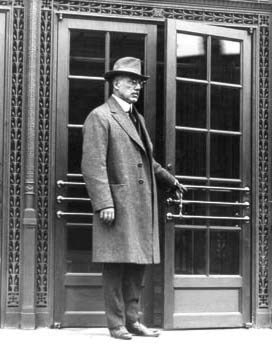Mike Selby
It only operated for two years, and only published four books, but these four have become some of the finest books ever published in the 20th century.
The publisher was George G. Booth, one of the most successful newspaper owners of his age. A successful iron-works factory owner from Toronto, Booth acquired the 'Detroit News' in the late 1800s. The improvements in faster and cheaper printing machines combined with a growing population of readers enabled Booth to quickly acquire a vast fortune. He also married the daughter of newspaper magnate James Scripps, which increased his wealth by ten.
As the 19th century drew to a close, Booth had a profound experience. While visiting the Lenox Library in New York, he had his first encounter with thousands of beautiful books, which had all been finely bound by hand. He was especially taken with books published by the Kelmscott Press — a British press run by William Morris, who had used the printing techniques of the 15th century to create modern editions. Morris felt a book's type, illustrations, design, and binding should meticulously flow together; a direct contrast to the poor quality books being churned out by mechanical processes. Booth was both impressed and inspired.
Upon returning home, Booth converted the attic of the 'Detroit News' building into his own private press. He installed a hand-operated letter press, carved his own type, and spent every free moment he had printing books "which will live for all time." From 1900 to 1902, Booth printed the following: John Locke Scripps' 'The First Published Life of Abraham Lincoln'; William Caxton's 'The Dictes and Sayings of the Philosophers'; Francis Bacon's 'Three Wise Men'; and Thomas More's 'Utopia.'
In addition to these handcrafted works of art, Booth came up with one of the best names for his new venture: The Cranbrook Press.
Disappointedly, the Cranbrook Press is not named after our city, but it does have a connection. Booth named it after his ancestral town, the same Cranbrook in Kent, England, where Colonel Baker hailed from.
His business demands forced Booth to abandon the Cranbrook Press after two years. Yet he strove to continue its tradition, hoping to give back to his community, as well as the burgeoning arts and crafts movement. Until his death in 1949, he and his wife used their wealth to build the Cranbrook Academy of Art, the Cranbrook Museum, the Cranbrook Gardens and the Cranbrook Educational Community. Built on the premises of their own home, today the site is a National Historic Landmark.
Booth used his enthusiasm for hand crafted books for the Cranbrook schools, and this has had a deep influence on art and design during the first half of the 20th century. The Metropolitan Museum of Art has a 'Design in America: the Cranbrook Vision 1925-1950' exhibit which attests to this.
But his heart was always with those four books he printed, and he explained his passion for them in a fifth book he printed titled "There is Something About the Cranbrook Press"...
(...which can be read in its entirety here: archive.org/stream/cranbrookpresss00presgoog#page/n8/mode/2up)
Mike Selby is Reference Librarian at the Cranbrook Public Library
